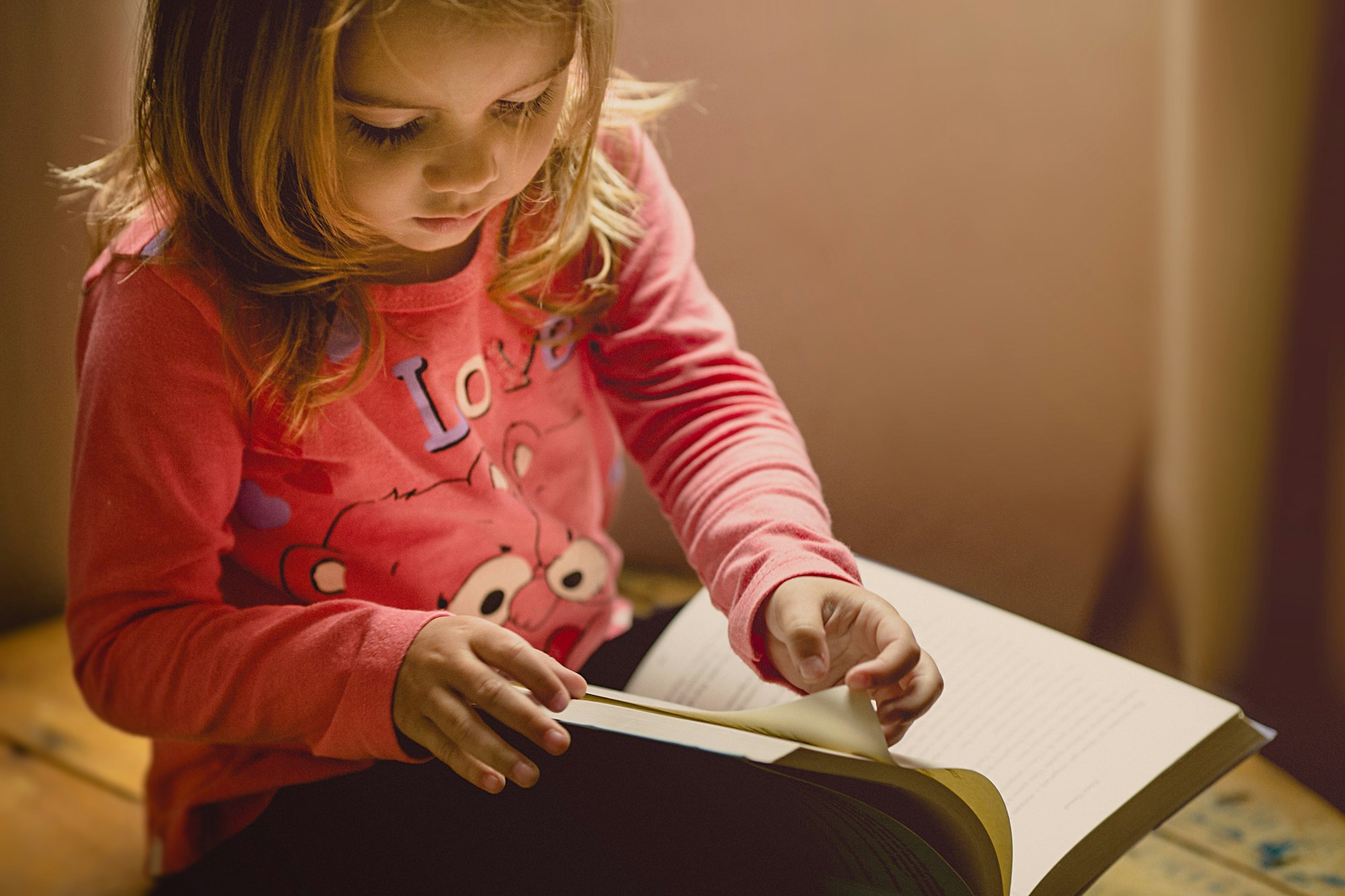Children’s daily lives pulse with routine, discovery, and rapid-fire change. For many parents, the question emerges sharply—will the simple act of reading stories or handling books truly influence a child’s future? The concern is felt keenly, especially when juggling parental fatigue, evolving expectations, or the pervasive lure of screens. The importance of reading in child development is a topic that reveals both hope and uncertainty: does reading merely enrich language, or does it sculpt the very core of emotional security, intellect, and social confidence? Science affirms—powerfully—that the effects are profound, starting from the very first shared page. This exploration will illuminate why early reading matters at every age, how reading shapes cognitive, emotional, and social domains, and how parents can cultivate effective habits—even when faced with limited resources or reading challenges.
Why Early Reading Matters: Foundations in Brain and Language
Neuroscientific research leaves little room for doubt: the importance of reading in child development extends far beyond teaching letters or words. In the first three years, neural pathways multiply with astonishing speed. During this sensitive window, exposing children to rich, spoken language—whether through stories, picture books, or even playful songs—stimulates synaptic development and fortifies connections in regions critical for language acquisition, auditory processing, and cognitive growth.
Parents often notice how toddlers gravitate towards repetition, eagerly requesting the same book again and again. Why is this so effective? Repetitive reading promotes the encoding of vocabulary and grammar patterns, supporting phonemic awareness—the ability to distinguish and manipulate sounds. Print awareness, memory, and the foundations for fluent reading all strengthen with each retelling. This isn’t simply about reciting cute rhymes; it’s a powerful interplay between sensory stimulation, working memory, and language comprehension.
Cognitive Development: Vocabulary, Attention, and Thinking Skills
Imagine your child sitting quietly, eyes tracking illustrations, lips whispering familiar lines—what’s happening beneath the surface? Here, the importance of reading in child development emerges as a bridge to intricate mental processes. Reading with children introduces a world of diverse vocabulary, complex sentence structures, and nuanced expressions. Each new word expands not just a child’s language bank, but also their ability to reason, infer, and solve problems.
Attention span blossoms through plot-following. As parents pause, ask questions, or encourage children to predict what happens next, executive functions—like impulse control and cognitive flexibility—are enhanced. Picture this: a child confronted with a character’s dilemma evaluates possible outcomes, drawing on critical thinking and problem-solving skills that anchor future academic achievement. Scientific studies repeatedly link frequent childhood reading with improved scores in reasoning and literacy (source: American Academy of Pediatrics).
Emotional and Social Benefits: Empathy, Confidence, and Family Attachment
You may wonder, can simple stories truly touch a child’s heart, guide their sense of self, or prepare them for playground disputes? The answer: resoundingly, yes. Through tales of friendship, challenge, or even minor trouble, stories become a script for real life. The importance of reading in child development is magnified as children practice emotional regulation and learn to recognize sadness, joy, or courage in others.
Adults who read with children—and pause to discuss a character’s feelings or choices—provide an emotional template. For example: “Why did the girl share her lunch?” or “How do you think the bear felt when he was left out?” These moments, while seemingly small, help children name emotions, cultivate empathy, and develop strategies for social interaction. Literature becomes rehearsal for life—and a buffer, offering comfort and reassurance.
Family reading rituals forge attachment. Sitting together, children and adults build security and trust not only through physical closeness but shared interest. Even for older children, these routines persist as opportunities for open dialogue and affirmation (“You chose this book; I love discovering it with you.”).
Expanding Knowledge and Stimulating Curiosity
Books offer more than stories; they open doors to discovery and new ideas. The importance of reading in child development is sharply visible when children begin to name animals, identify colors and shapes, or inquire about distant lands and cultures. Handling books—touching textured pages, pointing to details, flipping through sections—engages fine motor skills and introduces foundational concepts in numeracy, science, and geography.
A parent might find themselves fielding unending “why” questions. This is a sign not of distraction, but of healthy curiosity—a drive scientists recognize as pivotal for active learning and long-term engagement with the world.
Adapting Reading Strategies: Age, Ability, and Interest
Reading with Infants (0–2 Years)
Board books, fabric books, and tactile stories reign supreme. Keep sessions short but consistent; name objects, mimic animal sounds, and encourage page turning. These acts may seem playfully simple, yet are a proven incubator for early literacy—the suite of skills that forecast reading readiness.
Reading with Preschoolers (3–5 Years)
Bright illustrations, singing rhymes, and interactive reading invite phonological awareness (the skill of recognizing and playing with speech sounds). Invite preschoolers to complete repetitive phrases or recount familiar stories using pictures. These activities not only bolster memory but prepare the prefrontal cortex for more complex comprehension tasks.
Reading with School-Age Children (6–12 Years)
Older children bloom when given autonomy. Let them select genres—fantasy, comics, adventure—while ensuring a routine space for shared family dialogue. Here, the importance of reading in child development is underpinned by encouraging reflection, literary analysis, and linking fiction to everyday dilemmas. Reading together is never wasted, even as children gain independence; joint reflection deepens understanding and connects the dots between text and real-world situations.
Fostering a Supportive Reading Environment
Children need easy access to variety—picture books, nonfiction, graphic novels—without barriers. Establishing a cozy reading nook, minimizing background noise, and saturating the space with diverse materials fosters autonomy and strengthens the association between reading and comfort. Libraries, community events, and book swaps multiply options for discovery.
Key tip: display books at eye level, rotate them regularly, and celebrate rereading of old favorites. Consistency seeds habit; pleasure sustains it.
Parental Involvement: Modeling, Engagement, and Building Confidence
Modeling enthusiasm for books sends a message stronger than any lecture. When children see adults absorbed in reading—newspaper, cookbook, science magazine—they internalize the value of learning. Talk about stories as a family, pose open-ended questions, and invite debate about characters’ decisions. The importance of reading in child development is strengthened not just through solitary absorption, but through communal analysis and joyful discussion.
If a parent struggles with literacy, there is no shame—research encourages use of wordless picture books, collaborative storytelling from images, or even engaging with high-quality audiobooks. The outcome? A nurturing literacy environment, regardless of one’s own reading ability.
Supporting Diverse and Reluctant Readers
Children are wonderfully diverse in their reading paths. Some leap, others linger on pictures, and some resist text entirely. For children with learning differences—such as dyslexia—multisensory strategies bear immense value. Tactile books, stories accompanied by sound, and graphic novels can unlock engagement where traditional books might not.
Avoid pressure. Celebrate every small milestone; offer praise for effort, not just accomplishment. Social options like book clubs or reading challenges add playful motivation and a sense of belonging.
For those facing resource barriers or health limitations, community libraries, digital collections, and nonprofit organizations can bridge gaps. Audiobooks and textured books are not mere substitutes—they are powerful, parallel avenues to nurture the importance of reading in child development.
Innovation: Balancing Print, Digital Tools, and Screen Time
E-books, interactive applications, and audiobooks (digital storytelling) offer stimulating experiences, particularly for hesitant readers. Use digital materials with intention—be present to discuss stories, and set boundaries to preserve sleep and physical health (the American Academy of Pediatrics advises structured, quality usage). Blending print and digital is not only acceptable, but often necessary for today’s children; the key is participation, routine, and critical selection of content.
New devices, such as screen-free reading consoles, promise creative entry points for children interested in sound, music, or interactive play. These can reinforce fine motor development, support self-pacing, and convert passive listening into an empowering, multi-sensory adventure—without displacing the magic of page-and-paper experiences.
Key Takeaways
- The importance of reading in child development is profound: it fuels language growth, boosts cognitive and social-emotional abilities, and nurtures lifelong curiosity.
- Early, regular exposure to reading supports robust vocabulary and communication skills, while reinforcing emotional bonds between parents and children.
- Encouraging shared reading, discussing stories, and allowing child-directed choice paves the way for academic success and personal growth.
- There is no single “right” path—adapting materials and methods for a child’s age, stage, and abilities fosters resilience and genuine enjoyment.
- Modern tools—print, multimedia, and digital innovation—can coexist, provided they are selected thoughtfully and balanced alongside family rituals.
- For every barrier, resources exist: libraries, digital collections, and medical professionals can offer support for health or literacy challenges.
- Parents seeking further advice or tailored health questionnaires for their children can download the Heloa app for personalized guidance and free pediatric resources.
Caring for a child involves countless decisions, and questions about reading often arise in the middle of a busy, demanding day. The science is clear: nurturing a reading habit—by any means available and adapted to your child—represents an investment in cognitive, emotional, and future well-being. The importance of reading in child development is not just a principle; it’s a toolkit, ready to empower the next generation, one story at a time.
Questions Parents Ask
How can I help my child develop a love for reading if they are not interested in books?
It’s completely normal for some children to show less interest in books, and each child’s pace is unique. Try to explore different kinds of reading materials—comic books, magazines, or stories about topics they enjoy. Reading together, sharing stories aloud, or even listening to audiobooks can be helpful. Let your child choose what interests them, and create cozy, pressure-free routines around reading. Celebrate any curiosity about stories, even if it’s just looking at pictures or asking questions about book covers. Over time, these small steps can make reading a more enjoyable part of their everyday life.
At what age should parents start reading with their child?
You can start sharing books with your child from the earliest months—even newborns benefit from hearing your voice and seeing bright images. Infants enjoy looking at high-contrast colors and listening to gentle rhythms and melodies in stories. Early reading moments help build attention and foster a sense of security, laying the groundwork for language and communication skills. No matter your child’s age, it’s never too soon—or too late—to enjoy stories together.
What should I do if my child seems to struggle with reading compared to other children?
It’s important to remember that all children develop at their own rhythm. Some children may take more time to feel comfortable with reading. Encourage and support your child without putting pressure on them; enjoying stories together, discussing images, and praising their efforts are already wonderful ways to help. If you notice persistent difficulties, such as trouble recognizing words or understanding stories, don’t hesitate to speak with their teacher or a specialist. There are also supportive techniques and tools—like audio stories and illustrated books—that can build confidence and make reading more accessible for every child. Rassurez-vous: finding joy in reading is a path with many possible routes.










